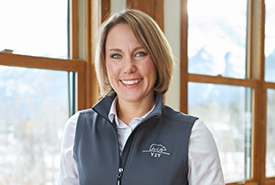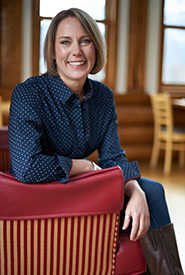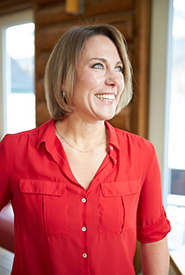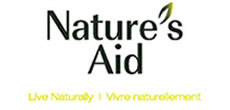Everyone plays a part in conservation

Aerin Jacob (Photo by Alexis McKeown)
As a conservation scientist at the Yellowstone to Yukon Conservation Initiative, an organization that works to connect and protect habitat in the Yellowstone to Yukon region, Aerin Jacob strives to help people live better with nature and with each other.
Aerin Jacob, PhD, recalls being around 12 years old and snowshoeing in Northern Ontario with her mother. “In the distance, about 50 metres away, I remember seeing a moose come out of the thick bush and stand on the trail for a moment,” she describes. “My mum explained that it was a gift to be able to see [this majestic animal], but we had a responsibility to not infringe on what it needed to do.”
Trained as an ecologist, Jacob works as a conservation scientist at Y2Y, a joint Canada-U.S., not-for-profit organization that connects and protects habitat from Yellowstone to Yukon so people and nature can thrive. Stretching more than 3,000 kilometres, this area is one of the last mountain ecosystems remaining on the planet where we have an opportunity for large-scale conservation. “People have lived [in this region] for thousands of years and are still very attached to the area, directly or indirectly,” Jacob explains. “For instance, a lot of the water that people in the prairies of Canada and the U.S. drink originates from these mountains.”

Le travail d'Aerin Jacob consiste à mener et à communiquer des travaux scientifiques qui orientent les actions, la gestion et les politiques de conservation (Photo d'Alexis McKeown)
Since 1993, Y2Y and its many partners have helped to increase the amount of strictly protected areas within the Yellowstone to Yukon region from 11 to 21 per cent. Other conservation designations and sustainable resource management practices make up another 23 per cent. In addition to conserving species at risk and other important biodiversity, these areas provide important wildlife corridors that connect protected landscapes and allow wildlife to roam.
Jacob’s job is to conduct and communicate science that guides conservation action, management and policy. She gets much joy from her research at Y2Y and its application in the real world, which includes land use planning, community engagement, ecosystem restoration, environmental law and policy, and human-wildlife co-existence. “The research of Y2Y and our partners is going to help people and nature live better,” she says. “Y2Y has a continental-scale vision of lands and waters that harmonize the needs of people with those of nature. I hope the work that we do will help advance that mission.”
Working with the public to communicate her work, including politicians, policy makers and the media, is integral to Jacob’s role with Y2Y. “Communicating with and learning from people is a huge part of conservation work,” she explains. “Scientists aren’t usually encouraged, let alone trained, to reach out to the public or politicians about our work. But we need to be brave and to talk early, often and loudly about the environmental changes we see and what that means for people and nature.”

Aerin Jacob encourage vivement les gens à s'impliquer en conservation (Photo d'Alexis McKeown)
She stresses the importance of working collaboratively in the conservation field. “The only way we’re going to get stuff done is by being willing to work together,” she says. “I love that [organizations like Y2Y and the Nature Conservancy of Canada] take a cooperative rather than competitive approach [to conservation]. Everybody has a role to play, and when we all pitch in, we can achieve wonderful things that may benefit people and nature.”
Jacob strongly encourages people to become involved with conservation, even if it’s just going out in nature and telling others about why natural areas are worth protecting. “None of this work would be possible without people who speak up for nature, whether it’s through writing letters, calling elected officials, donating money or attending public meetings,” she says.
Despite the many challenges surrounding conservation, including climate change and biodiversity loss, Jacob remains hopeful. “I hope that when I’m an old lady, we will still have huge areas of wild nature, with thriving populations of wildlife, healthy ecosystems and communities that recognize just how much we benefit from nature,” she explains. “I hope that generations from now, people will still get to experience the wonderful things that people living today do: to be able to see wildlife or [at least] know that it exists.”




